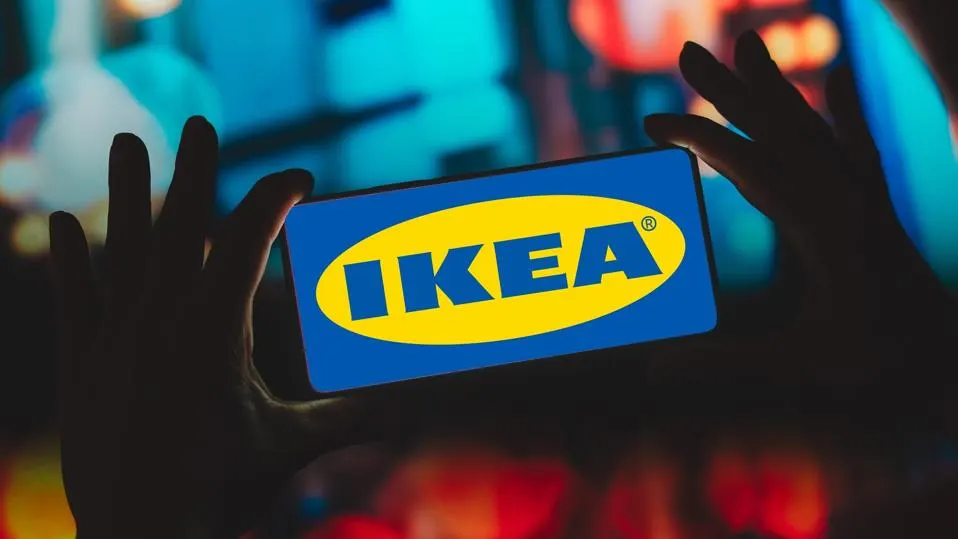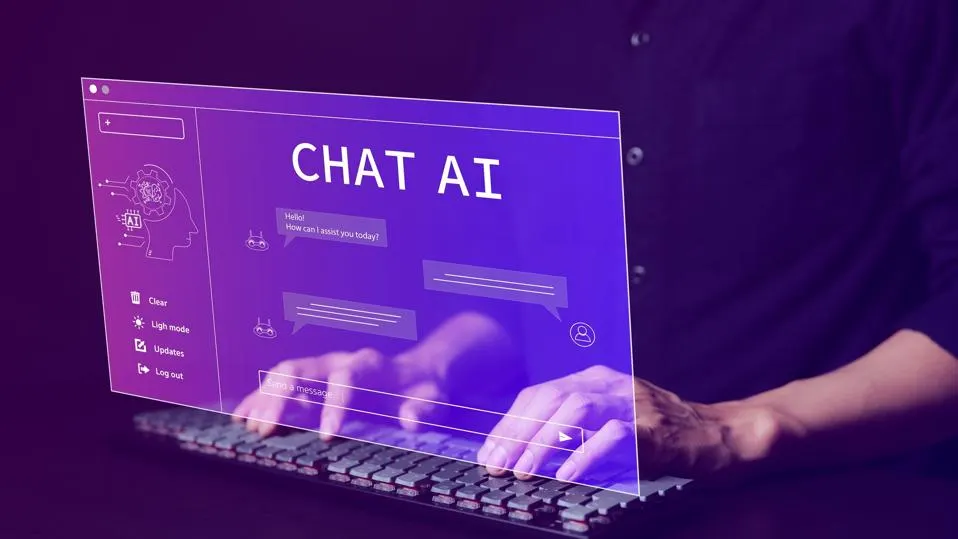The 5 Biggest Artificial Intelligence (AI) Trends In 2023
17 October 2022
Over the last decade, Artificial intelligence (AI) has become embedded in every aspect of our society and lives. From chatbots and virtual assistants like Siri and Alexa to automated industrial machinery and self-driving cars, it’s hard to ignore its impact.

Today, the technology most commonly used to achieve AI is machine learning – advanced software algorithms designed to carry out one specific task, such as answering questions, translating languages or navigating a journey – and become increasingly good at it as they are exposed to more and more data.
Worldwide, spending by governments and business on AI technology will top $500 billion in 2023, according to IDC research. But how will it be used, and what impact will it have? Here, I outline what I believe will be the most important trends around the use of AI in business and society over the next 12 months.
The Ongoing Democratization of AI
AI will only achieve its full potential if it's available to everyone and every company and organization is able to benefit. Thankfully in 2023, this will be easier than ever. An ever-growing number of apps put AI functionality at the fingers of anyone, regardless of their level of technical skill. This can be as simple as predictive text suggestions reducing the amount of typing needed to search or write emails to apps that enable us to create sophisticated visualizations and reports with a click of a mouse.
If there isn’t an app that does what you need, then it’s increasingly simple to create your own, even if you don’t know how to code, thanks to the growing number of no-code and low-code platforms. These enable just about anyone to create, test and deploy AI-powered solutions using simple drag-and-drop or wizard-based interfaces. Examples include SwayAI, used to develop enterprise AI applications, and Akkio, which can create prediction and decision-making tools.
Ultimately, the democratization of AI will enable businesses and organizations to overcome the challenges posed by the AI skills gap created by the shortage of skilled and trained data scientists and AI software engineers. By empowering anybody to become "armchair" data scientists and engineers, the power and utility of AI will become within reach for us all.
Generative AI
If you ask most people what they think AI is useful for, they will probably tell you that it’s mainly for automating routine, repetitive tasks. While this is often true, a growing branch of the science is dedicated to building AI tools and applications that can mimic one of the most uniquely human of all skill sets – creativity.
Generative AI algorithms take existing data – video, images or sounds, or even computer code – and uses it to create entirely new content that’s never existed in the non-digital world.
One of the most well-known generative AI models is GPT-3, developed by OpenAI and capable of creating text and prose close to being indistinguishable from that created by humans. A variant of GPT-3 known as DALL-E is used to create images.
The technology has achieved mainstream exposure thanks to experiments such as the famous deepfaked Tom Cruise videos and the Metaphysic act, which took America's Got Talent by storm this year. But in 2023, we will see it used increasingly frequently to create synthetic data that can be used by businesses for all manner of purposes. Synthetic audio and video data can remove the need to capture film and speech on video – simply type what you want the audience to see and hear into your generative tools, and the AI creates it for you!
Ethical and Explainable AI
The development of more ethical and explainable AI models is essential for a number of reasons. Most pressingly, though, it comes down to trust. AI requires data in order to learn, and often this means personal data. For many of the potentially most useful and powerful AI use cases, this might be very sensitive data like health or financial information. If we, the general public, don't trust AI or understand how it makes decisions, we simply won't feel safe handing over our information, and the whole thing falls apart.
In 2023 there will be efforts to overcome the “black box” problem of AI. Those responsible for putting AI systems in place will work harder to ensure that they are able to explain how decisions are made and what information was used to arrive at them. The role of AI ethics will become increasingly prominent, too, as organizations get to grips with eliminating bias and unfairness from their automated decision-making systems. Biased data has been shown to lead to prejudice in automated outcomes that can potentially lead to discrimination and unfair treatment – which simply won’t be acceptable in a world where AI plays a part in decisions involving employment and access to justice or healthcare.
Augmented Working
In 2023, more of us will find ourselves working alongside robots and smart machines specifically designed to help us do our jobs better and more efficiently. This could take the form of smart handsets giving us instant access to data and analytics capabilities – as we have seen increasingly used in retail as well as industrial workplaces. It could mean augmented reality (AR)-enabled headsets that overlay digital information on the world around us. In a maintenance or manufacturing use case, this could give us real-time information that can help us identify hazards and risks to our own safety – such as pointing out when a wire is likely to be live or a component may be hot. Management and leadership teams will increasingly have access to real-time dashboards and reporting, giving an instant up-to-the-minute overview of operational effectiveness. AI-powered virtual assistants will also become more prevalent in the workplace, able to quickly answer questions as well as automatically suggest an alternative, more efficient methods of accomplishing objectives. Overall, developing the ability to work with and alongside intelligent, smart machines will become an increasingly indispensable work skill. I would even go as far as to say that for many of us, it will go a long way towards mitigating the dangers of finding our roles becoming redundant!
Sustainable AI
In 2023 all companies will be under pressure to reduce their carbon footprint and minimize their impact on the environment. In this respect, the race to adopt and profit from AI can be both a blessing and a hindrance. AI algorithms – as well as all the infrastructure needed to support and deliver them, such as cloud networks and edge devices – require increasing amounts of power and resources. One study in 2019 found that training a single deep-learning model can result in the emission of 284,000 kilograms of CO2. At the same time, the technology has the potential to help companies understand how to build products, services, and infrastructure in a more energy-efficient way by identifying sources of waste and inefficiency. Ongoing efforts to implement more green and renewable energy-powered infrastructure are also a part of the drive toward delivering more sustainable AI.
AI can be a driver of sustainability in other industries and areas of operation, too – for example, computer vision is used in conjunction with satellite imagery to identify deforestation and illegal logging activity in the rainforests, as well as illegal fishing activity, which impacts biodiversity in the oceans. This year, I expect to see a continued drive towards deployment of AI initiatives aimed at tackling some of the most pressing problems facing our planet – rather than simply in pursuit of increased corporate profits.
Related Articles
Responsible AI: Why Privacy Is An Essential Element
Today, people often talk about “responsible” AI use, but what do they really mean?[...]
The Amazing Ways IKEA Is Using Generative AI
Global furniture retailer IKEA has long been at the forefront of tech-driven retail innovation.[...]
Generative AI Is Coming To Your Home Appliances
Across all industries, organizations are rapidly embracing generative AI. Among them, makers of home appliances like fridges and ovens.[...]
Generative AI And The Risk Of Inbreeding
We all understand the concept of inbreeding in human terms – where people who are too genetically similar reproduce, resulting in offspring with deformities.[...]
How Generative AI Will Change The Jobs Of HR Professionals
HR is fundamentally about managing humans – so how will the job change in a future where powerful generative AI tools are everywhere?[...]
Amazon Harnesses Generative AI For Seamless Palm Recognition Shopping Experience
Generative AI may have made headlines for its ability to write text and create art, but its uses extend beyond simply generating content.[...]
Sign up to Stay in Touch!
Bernard Marr is a world-renowned futurist, influencer and thought leader in the fields of business and technology, with a passion for using technology for the good of humanity.
He is a best-selling author of over 20 books, writes a regular column for Forbes and advises and coaches many of the world’s best-known organisations.
He has a combined following of 4 million people across his social media channels and newsletters and was ranked by LinkedIn as one of the top 5 business influencers in the world.
Bernard’s latest book is ‘Generative AI in Practice’.










Social Media